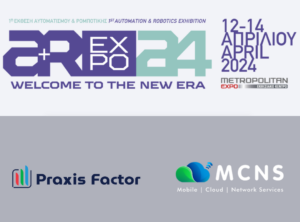As the world becomes more connected, the way we communicate is drastically changing. Gone are the days of sending letters and waiting weeks for a response. Instead, we can now send messages in real time, and thanks to the advancements in artificial intelligence, we can even use chatbots to do some of the talking for us.
One of the most remarkable AI tools in the chatbot space is Chat GPT. GPT, short for Generative Pre-trained Transformer, is a neural network-based language model that can generate human-like responses to text prompts.
GPT was developed by the research team at OpenAI and is trained on a vast corpus of text data from the internet. The result is an AI model that can recognize patterns in human language and use those patterns to generate almost indistinguishable responses from those written by humans.
To understand how GPT works, we need to look closely at neural networks. Neural networks are designed to mimic the structure of the human brain and can learn from data inputs to make predictions or decisions. In the context of GPT, the neural network generates text by predicting the most probable word to follow a given sequence of words. The training data used to train GPT includes vast amounts of text from the internet, including books, articles, and social media posts. This data is utilized to teach the model how to recognize patterns in human language and predict the probability of particular words appearing in a sentence.
Once the model is trained, it can generate text by taking a starting prompt and predicting the most likely words to follow. For example, if a user asked a GPT-powered chatbot, “What are the best restaurants in town?” GPT would use the training data to generate a list of possible responses, such as “I recommend trying out the French restaurant on Main Street” or “The sushi place on 7th Avenue is excellent.”
GPT is a potent tool for businesses of all shapes and sizes looking to improve customer service or engage with customers. Chatbots powered by GPT can easily handle an array of customer inquiries, from technical support questions to product recommendations.
However, GPT does have some limitations. Despite being incredibly sophisticated, GPT is still an AI model and can make mistakes or provide incomplete answers. Additionally, GPT is not yet capable of understanding and interpreting human emotions or context, which can lead to incorrect responses in some situations.
Despite these limitations, GPT is undoubtedly one of the most significant advancements in the chatbot space to date. As the technology continues to mature and improve, we can expect to see chatbots become even more intelligent and capable of handling increasingly complex customer queries and content requests.
In summary, the essential guide to understanding Chat GPT can be boiled down to this: it’s a neural network-based language model capable of generating human-like responses to text prompts. It’s trained on vast amounts of text data sourced from the internet. While it has some limitations, it’s a powerful tool for businesses wishing to improve their customer service or better engage with their customers. As AI technology evolves, we can predict that GPT-supported chatbots will become even more sophisticated, helping to shape the future of customer service, engagement and more, as we know it.





